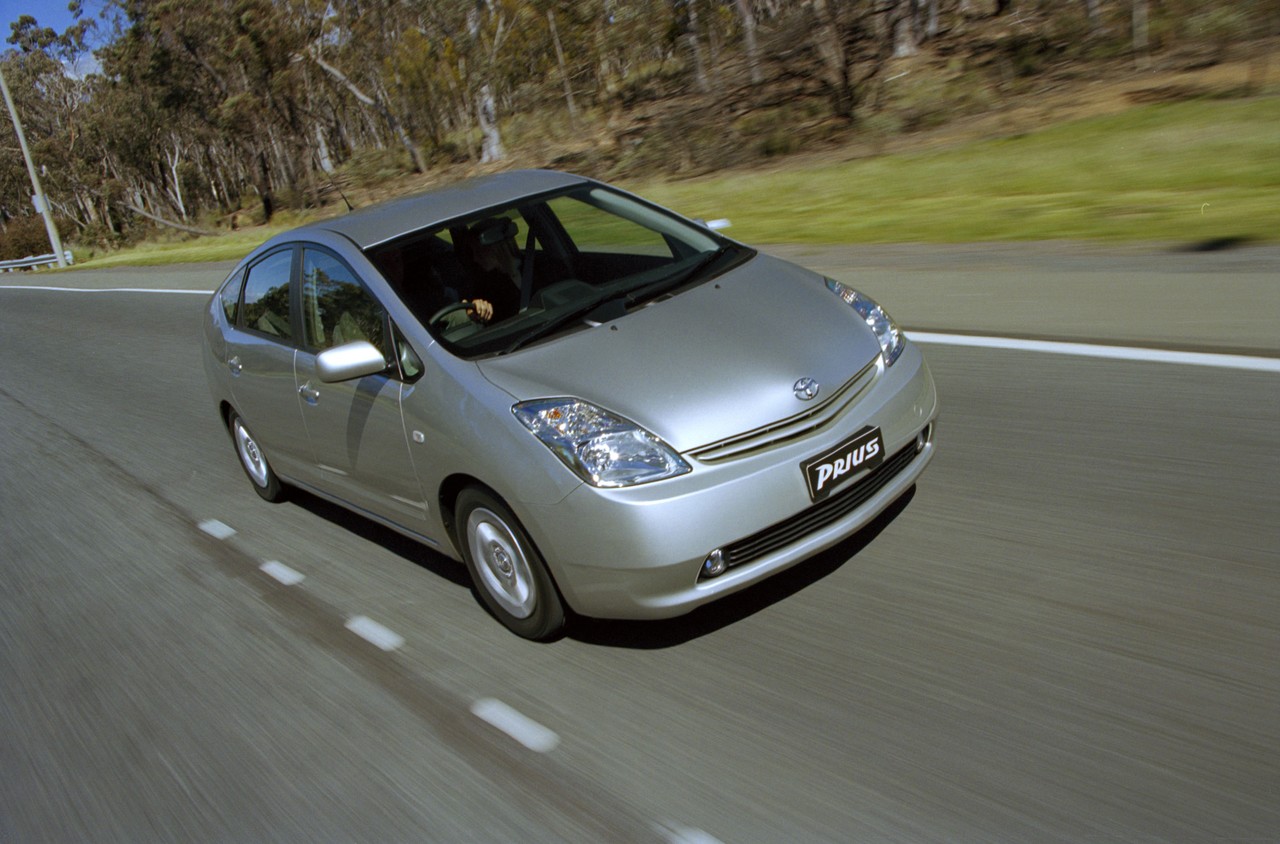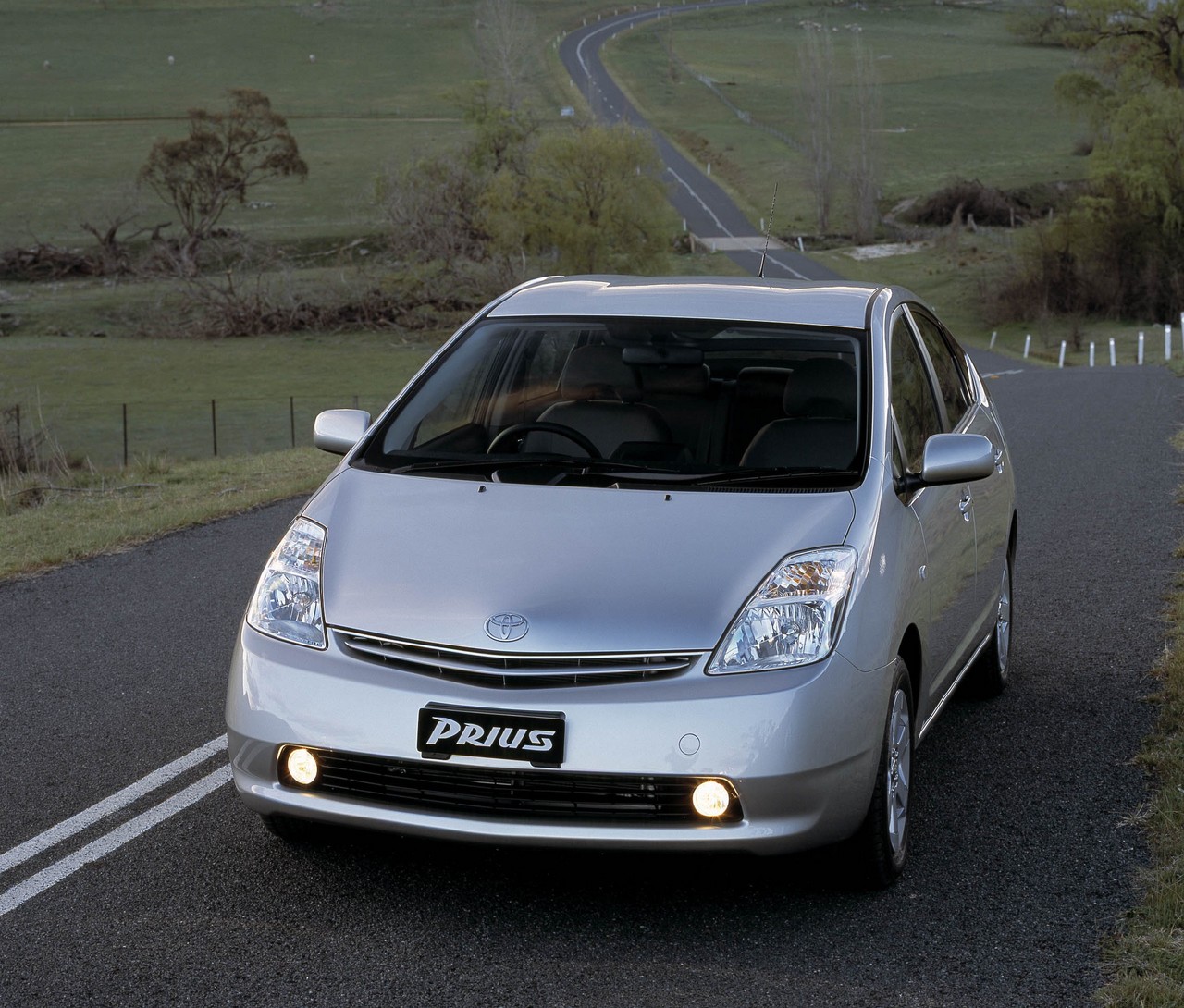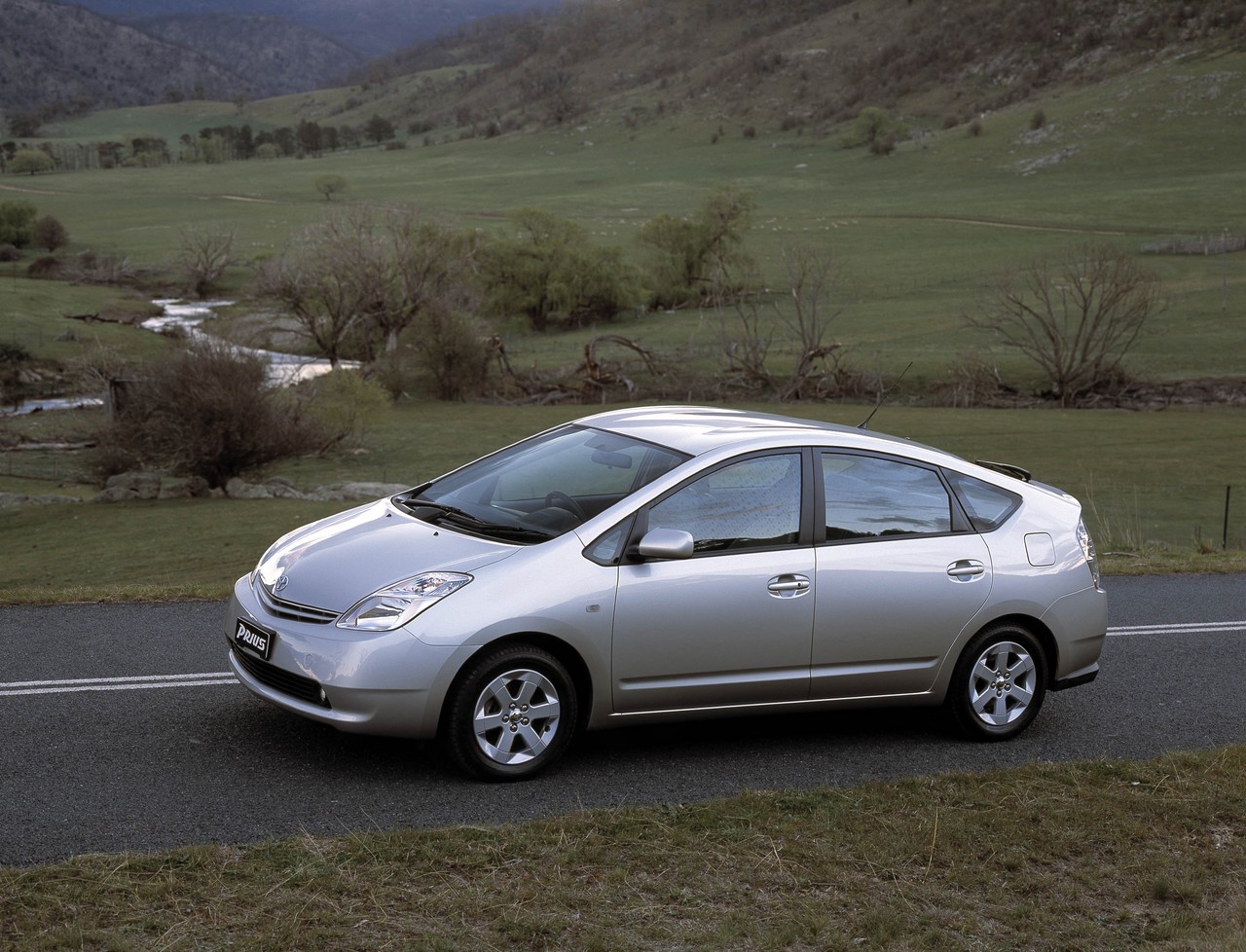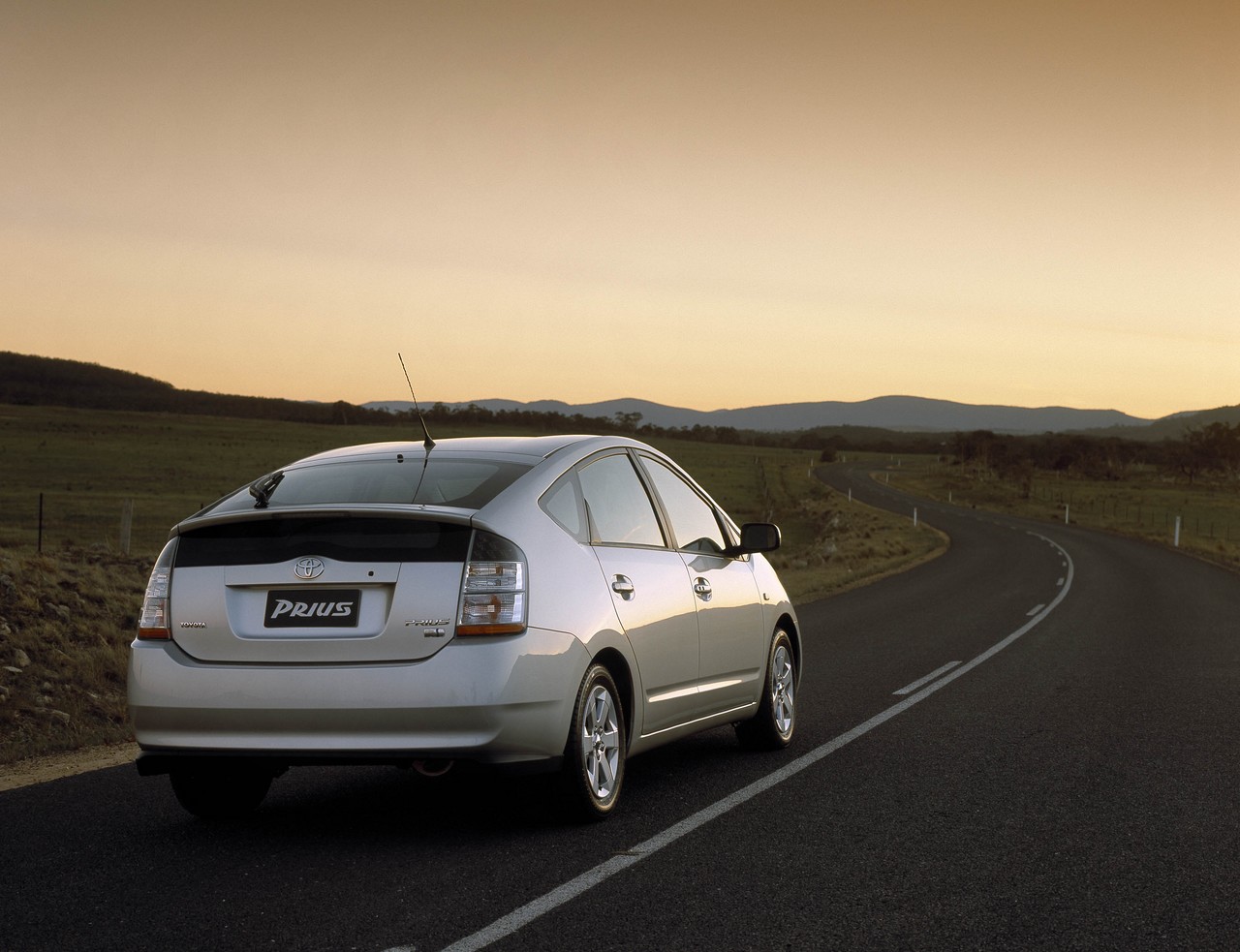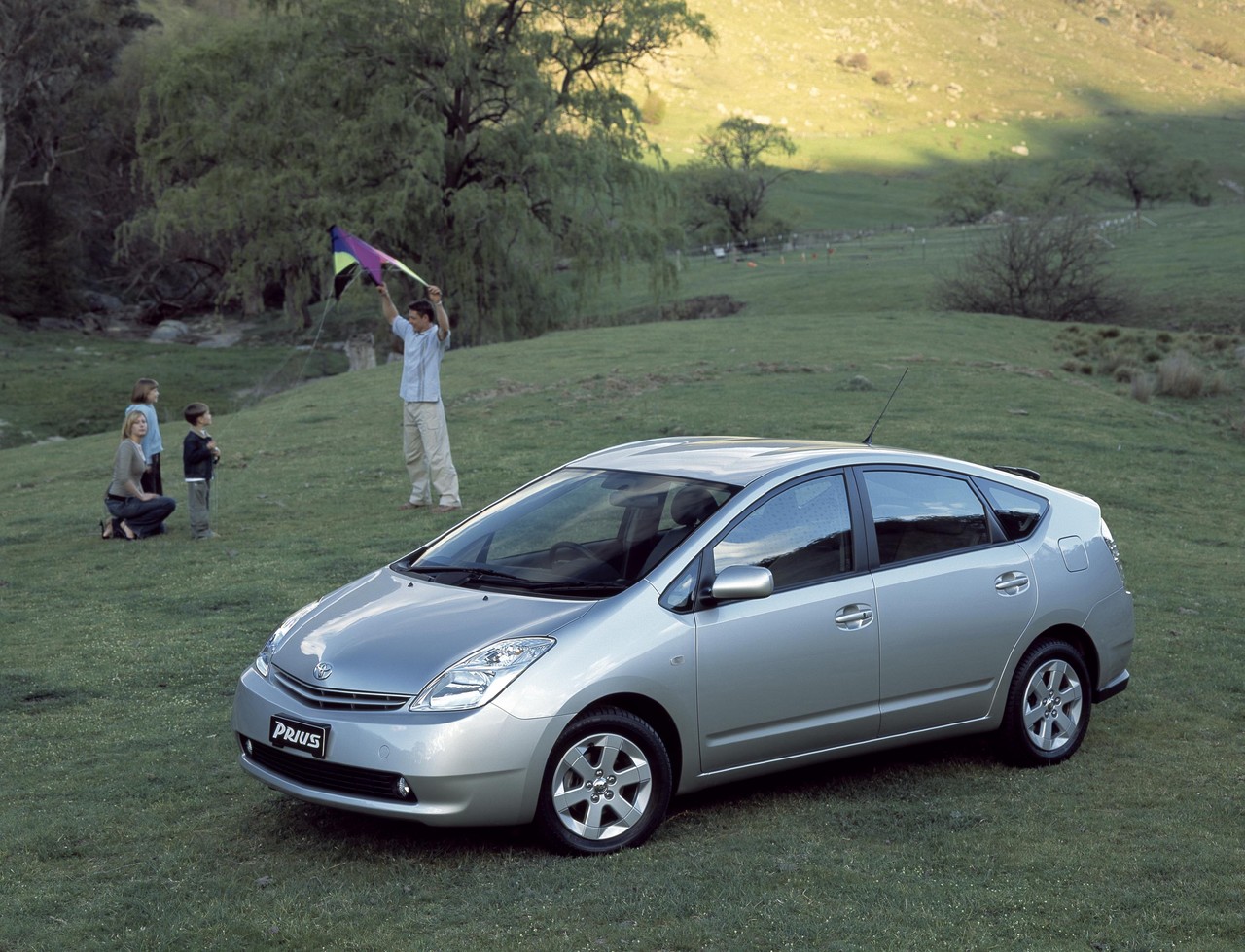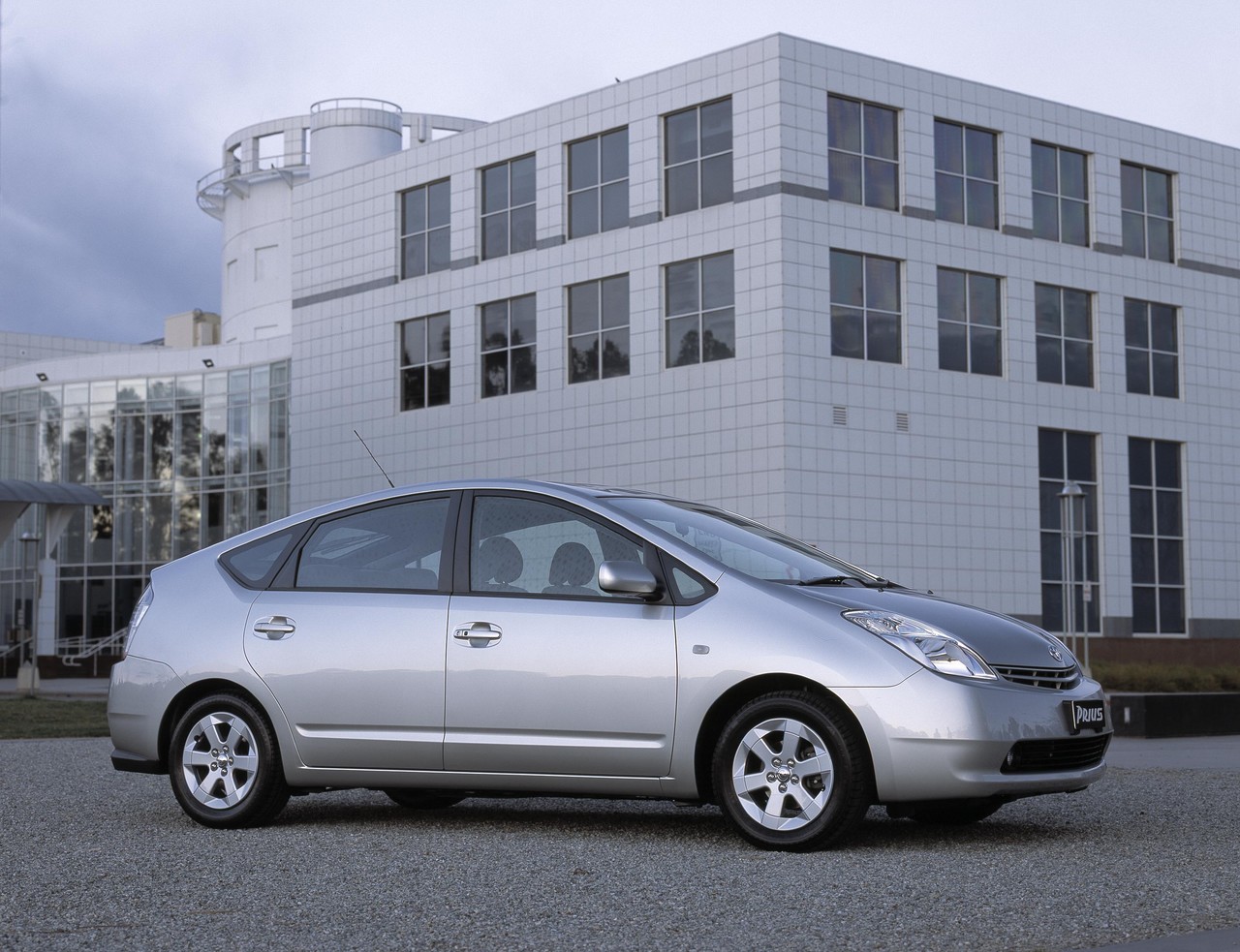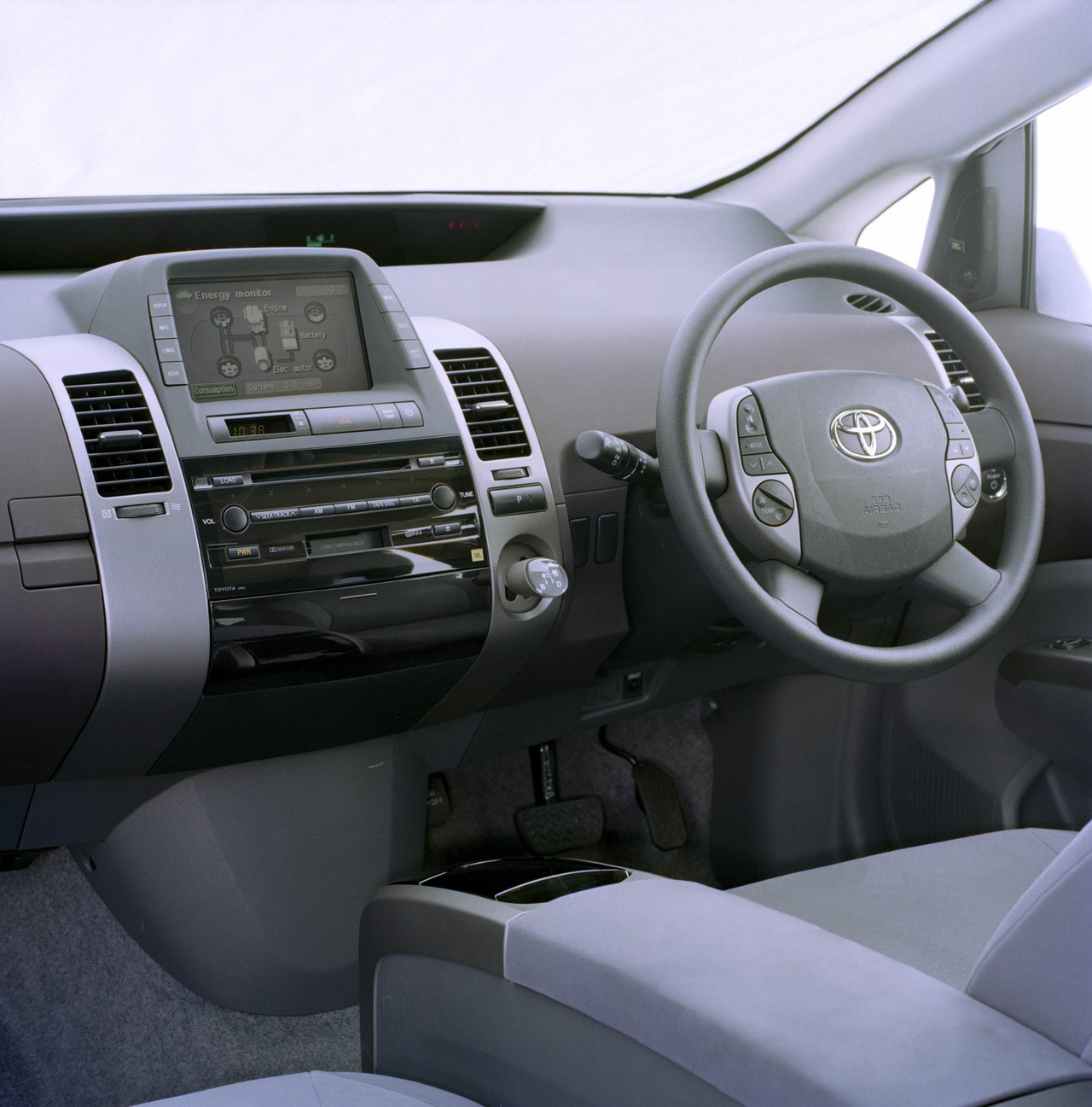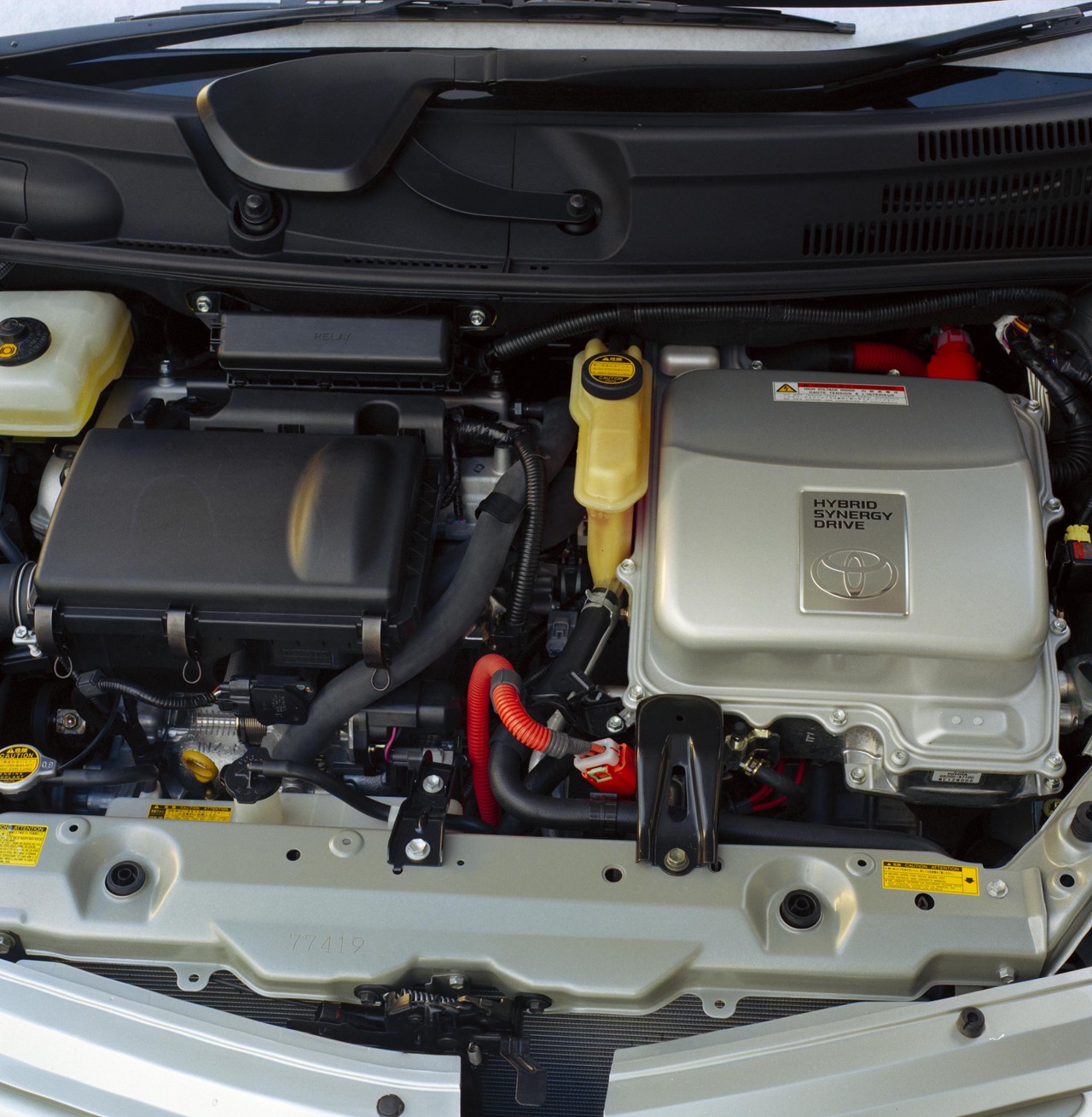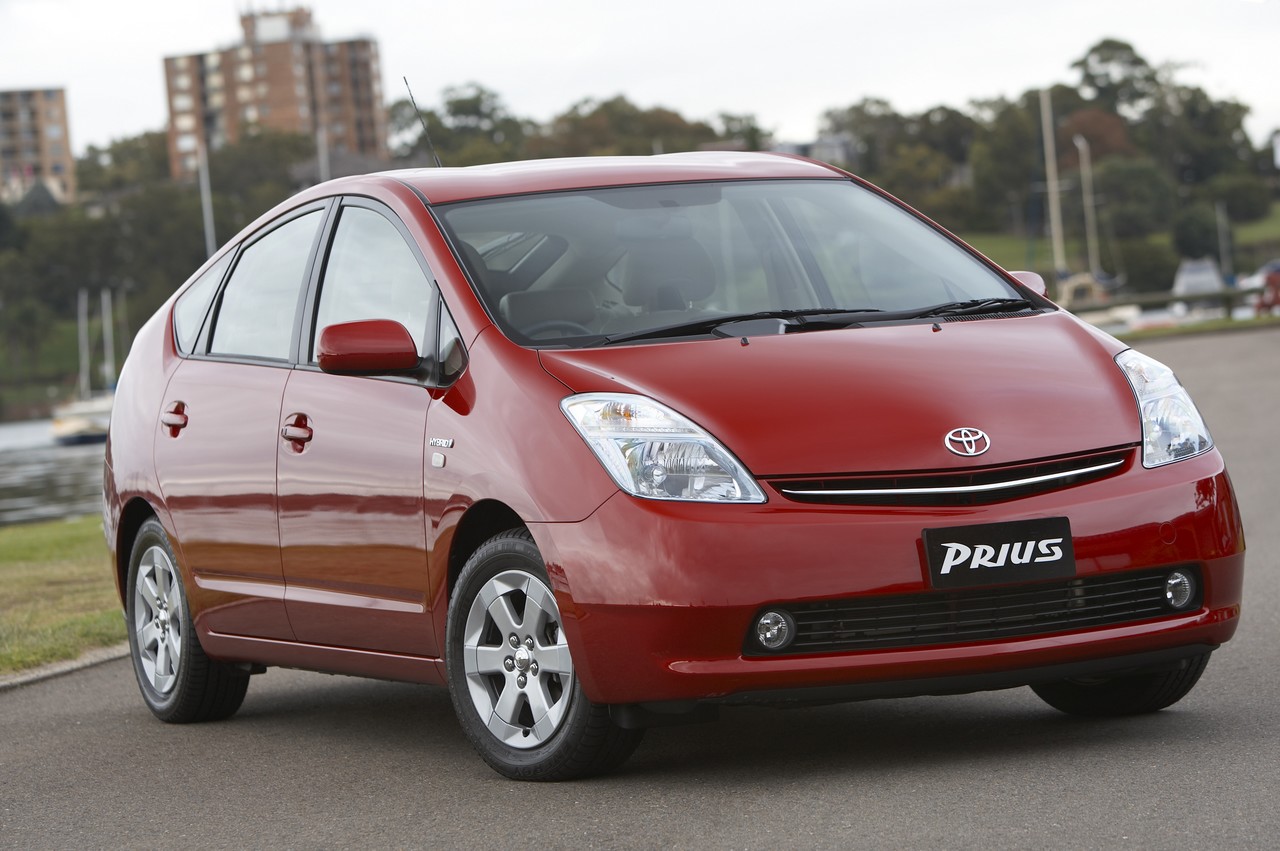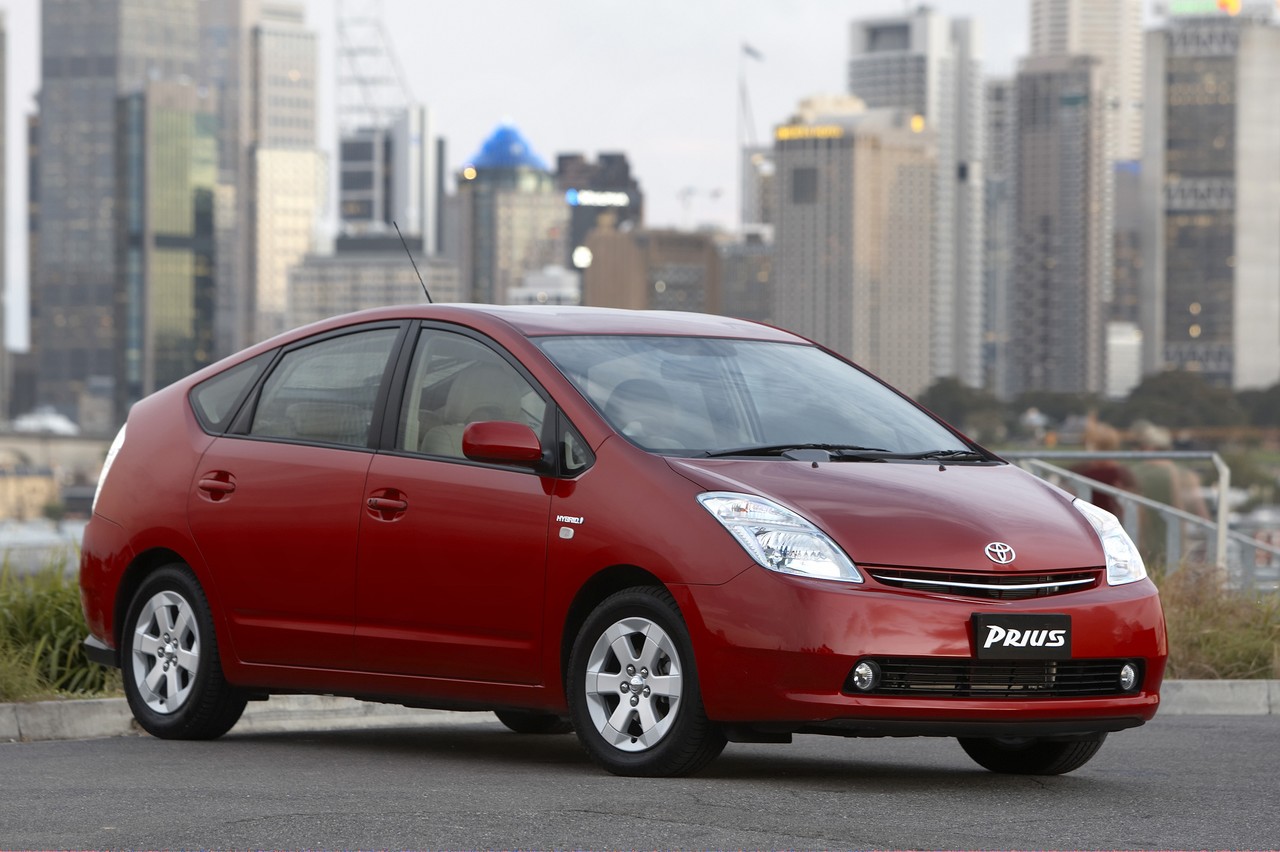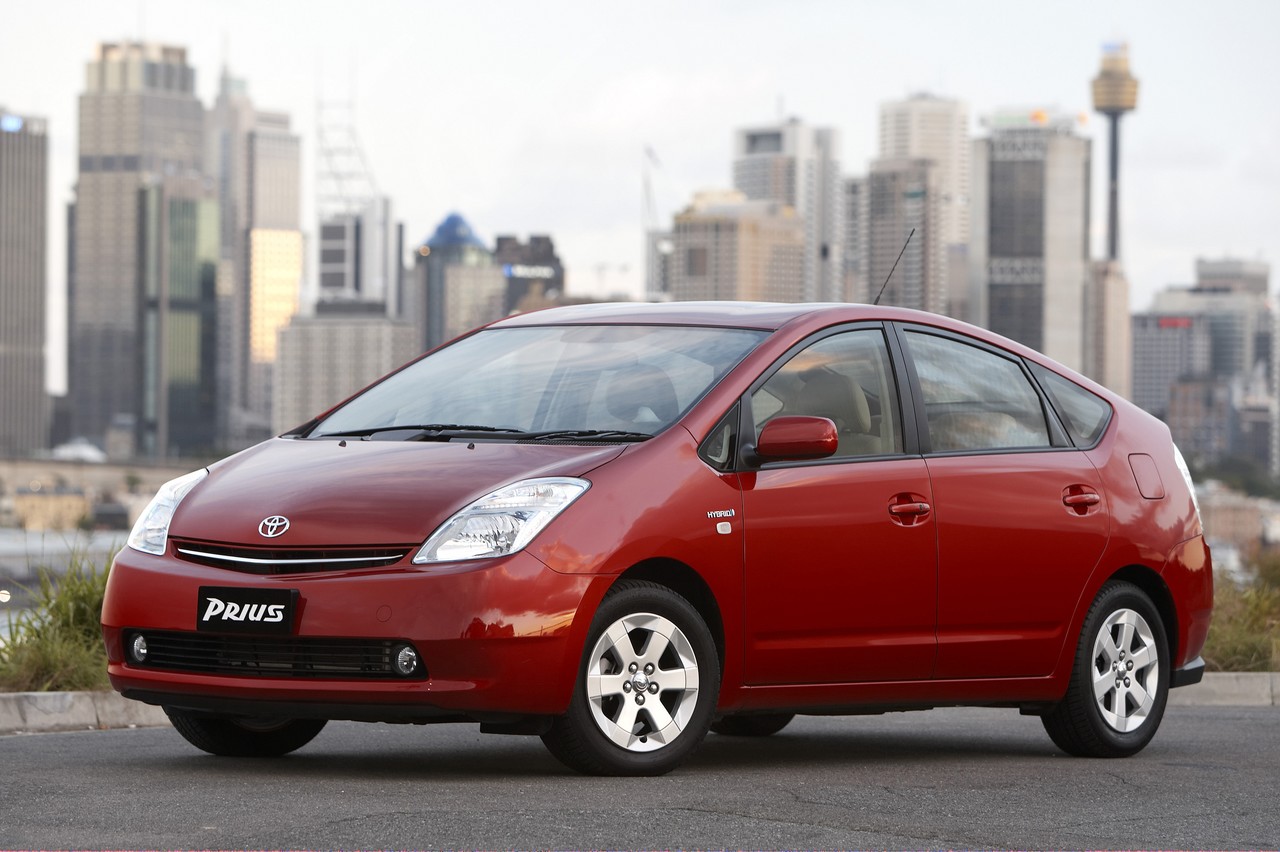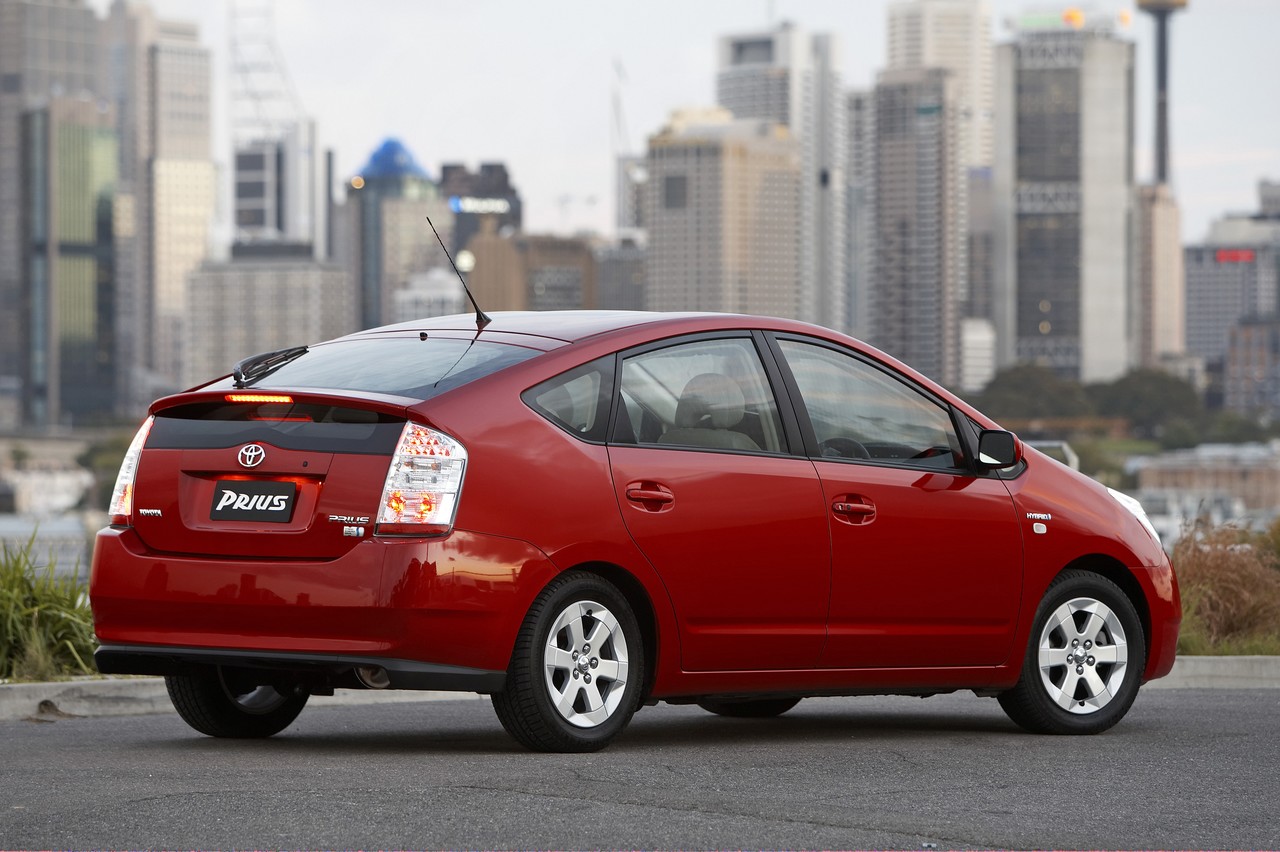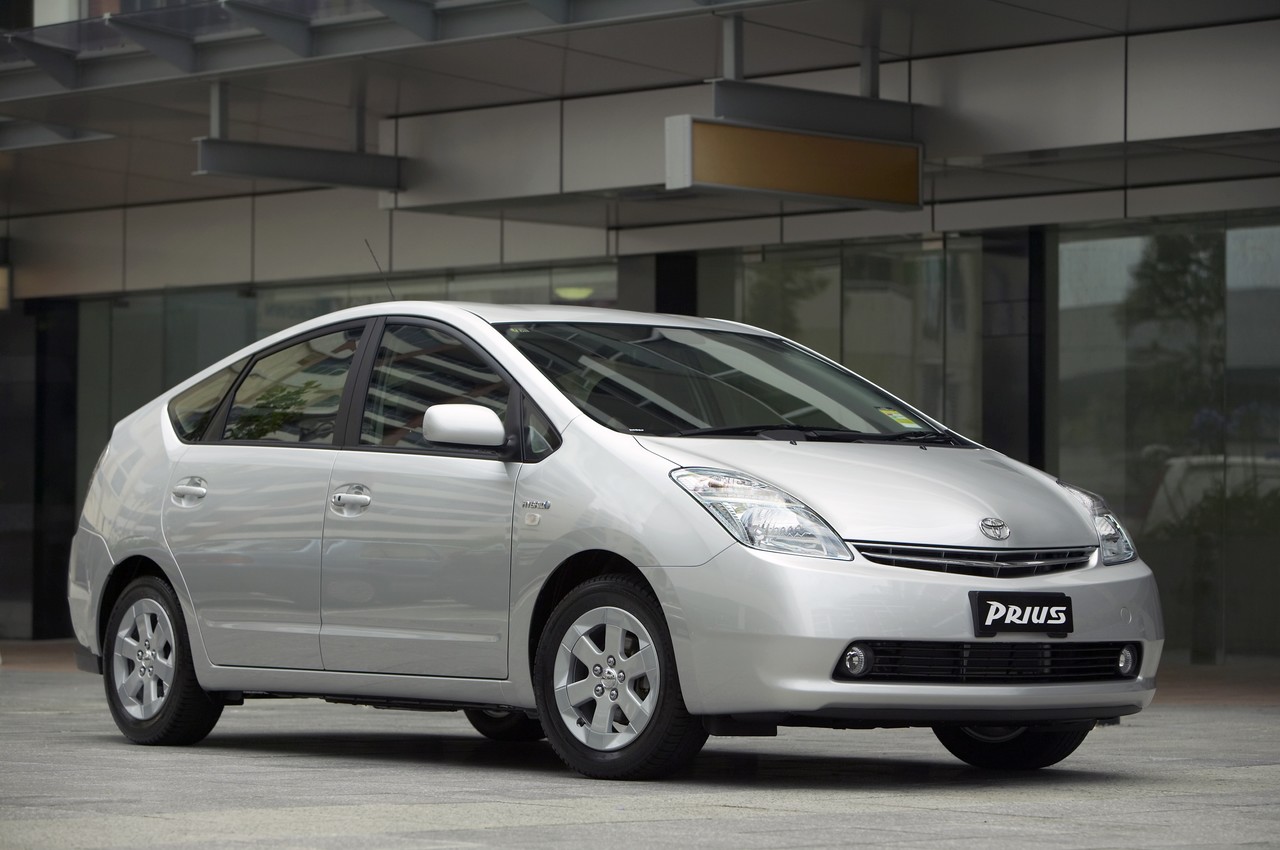
- Fuel-efficient and refined hybrid powertrain
- Comfortable front seats
- Impressive JBL audio system for Prius i-Tech
- Steering is well-weighted (but lacks feedback)
- Generally comfortable ride…
- but short-travel suspension struggles with bigger bumps
- Engine noise when accelerating
- Tyre noise
- Poor rear visibility
Review: Toyota XW20.I Prius (2003-05)
Overview
Released in October 2003, the Toyota XW20 Series I (XW20.I) Prius was a hybrid-powered liftback. Manufactured in Japan, the XW20 Prius was powered by a 1.5-litre Atkinson cycle four-cylinder petrol engine and permanent magnet AC electric motor drawing power from a 500 volt nickel-metal hydride battery. Drive was directed via a continuously variable transmission (CVT) to the front wheels.
1NZ-FXE engine
The 1NZ-FXE Atkinson cycle engine had an aluminium alloy block and cylinder head, forged steel connecting rods, an aluminium intake manifold, multi-point sequential electronic fuel injection, double overhead camshafts (driven by a toothed belt and scissors-gear), four valves per cylinder, Toyota’s ‘Variable Valve Timing with intelligence’ (VVT-i), direct ignition and a compression ratio of 13.0:1. As an Atkinson cycle engine, the 1NZ-FXE had a higher expansion ratio than a conventional Otto cycle engine, making the expansion stroke longer than the compression stroke.
Hybrid operation
When stationary or coasting, the petrol engine would switch off and almost seamlessly restart when required. Energy not required for propulsion was converted to electricity and regenerative braking also enabled kinetic energy to be converted into electric energy; similarly, a gear lever enabled the driver to select ‘B’ for engine braking. There was also an ‘EV’ drive mode which enabled the Prius to be driven solely by the electric motor for up to two kilometers and at low speeds on electric propulsion only (depending on road gradient, battery charge and accelerator pedal angle).
Over the combined ADR 81/01 cycle, the Prius achieved fuel economy of 4.4 litres per 100 km. The XW20 Prius could operate on 91RON unleaded petrol.
Dimensions and suspension
Compared to the Toyota XW10 Prius , the XW20 Prius was 130 mm longer (at 4445 mm), 30 mm wider (1725 mm), 5 mm taller (1490 mm) and had a 150 mm longer wheelbase (2800 mm).
Like its XW10 predecessor, the XW20 Prius had MacPherson strut front suspension and a torsion beam rear axle.
| Details | Trans. | Peak power | Peak torque | |
|---|---|---|---|---|
| Petrol engine | 1.5-litre Atkinson cycle petrol I4 (1NZ-FXE) |
CVT | 57 kW at 5000 rpm | 115 Nm at 4200 rpm |
| Permanent magnet AC electric motor | 274-volt nickel-metal hydride battery | 50 kW | 400 Nm | |
| Combined: | 82 kW | 478 Nm (up to 22 km/h) |
Safety equipment
Standard safety equipment for the Toyota XW20 Prius included dual front airbags, ABS, electronic brake force distribution, traction control and front seatbelts with pretensioners and load limiters. The i-Tech variants were further equipped with front seat-mounted side airbags, full-length curtain airbags (i.e. for front and rear occupants) and electronic stability control.
Euro NCAP crash testing
In Euro NCAP crash testing , a Toyota Prius – equipped with dual front airbags, front side airbags and curtain airbags – received a five star adult occupant protection rating with a score of 33.72 out of 37. In the frontal offset impact test, there was a slight risk of serious chest injury for the front occupants and the driver’s knees risked injury from contact with the steering column and hard points beneath the fascia. In the side impact and pole tests, however, maximum points were awarded.
Features: Prius and Prius i-Tech
Standard features for the Toyota Prius included 15-inch alloy wheels, a six speaker sound system with CD player, climate control air conditioning, cruise control, front fog lights, multi-function steering wheel, remote central locking, power mirrors and windows, a tilt adjustable steering wheel, rear cargo blind, tinted windows and an immobiliser.
The Prius i-Tech was further equipped with a nine speaker JBL sound system with a six-disc in-dash CD player, satellite navigation, Bluetooth hands-free mobile phone connectivity and a proximity key (‘Smart Entry’).
June 2005 update
From June 2005, the Prius benefited from the following updates:
- A front suspension tower brace was fitted for increased body rigidity;
- The suspension was recalibrated for improved drive comfort;
- An improved dashboard silencer was fitted for reduced interior noise;
- New control logic for the electronic power steering system was introduced; and,
- A new design for the aerodynamic ‘spats’ in front of the rear wheels was adopted.
The post-June 2005 Prius was also certified for Euro IV emissions compliance.
Related links
Review: Toyota XW20.II Prius (2005-09)
Overview
Released in November 2005, the Toyota XW20 Series II (XW20.II) Prius introduced a minor facelift and improved equipment levels for the i-Tech variant. Visually, the XW20.II Prius could be identified by its revised front mask with new headlights, a front lip spoiler and chrome-finish front grille; there were also new tail-lights. Inside, there were easier-to-read revised instruments, soft padding for the instrument panel and the rear seat was repositioned with a lower hip point.
| Details | Trans. | Peak power | Peak torque | |
|---|---|---|---|---|
| Petrol engine | 1.5-litre Atkinson cycle petrol I4 (1NZ-FXE) |
CVT | 57 kW at 5000 rpm | 115 Nm at 4200 rpm |
| Permanent magnet AC electric motor | 274-volt nickel-metal hydride battery | 50 kW | 400 Nm | |
| Combined: | 82 kW | 478 Nm (up to 22 km/h) |
Features
Standard features for the entry-level Prius were unchanged. The Prius i-Tech, however, featured leather seats and an upgraded audio system with an auxiliary input, MP3/WMA-compatibility, an automatic sound leveler and digital signal processor. The satellite navigation system was also improved with better image quality, a ‘help’ function, estimated time of arrival, keyboard function and ‘breadcrumbing’ route tracing.
Related links
